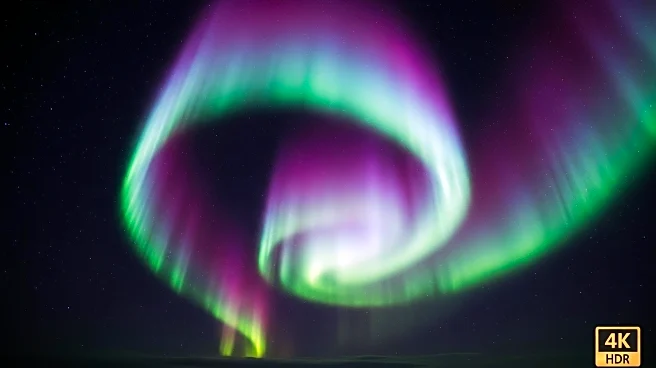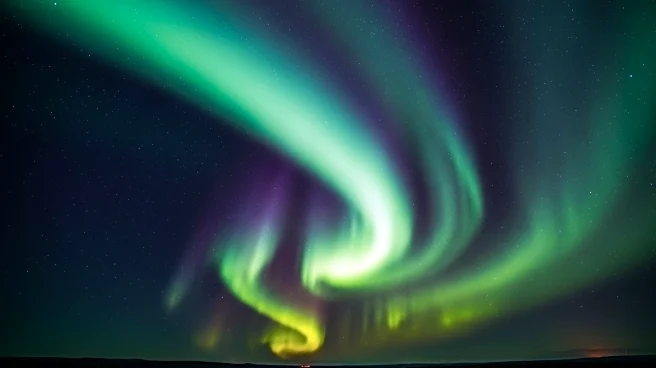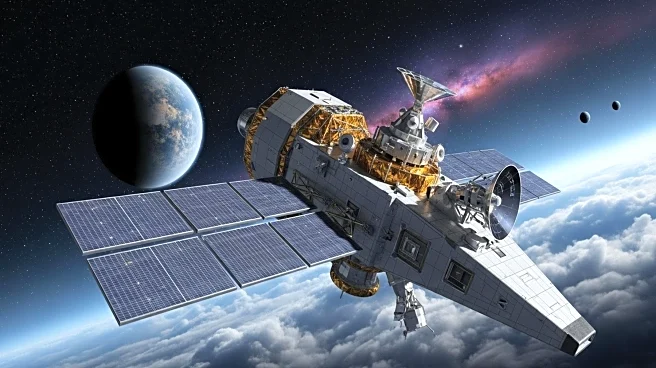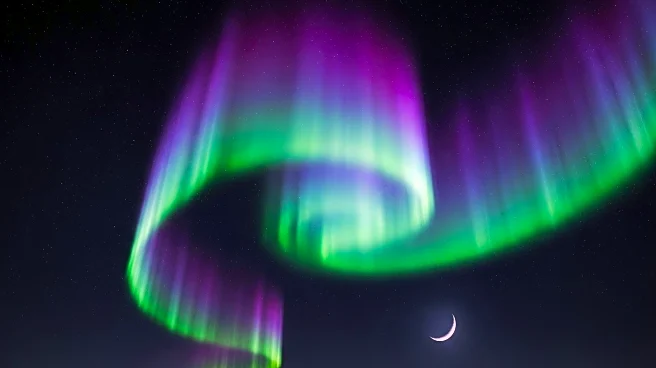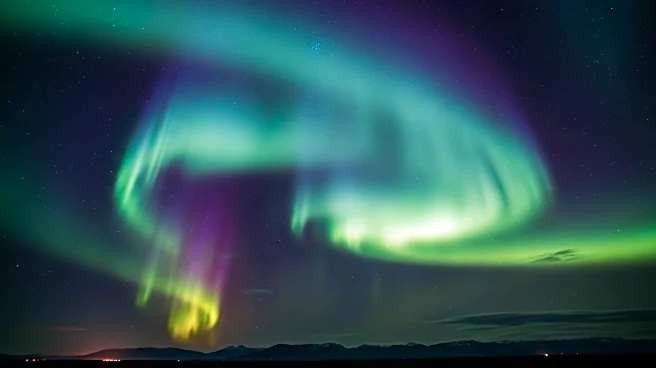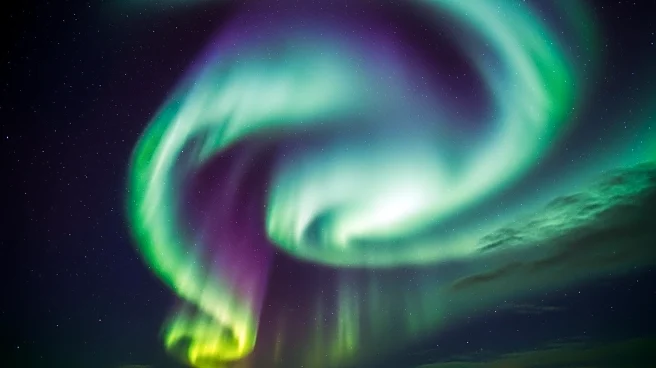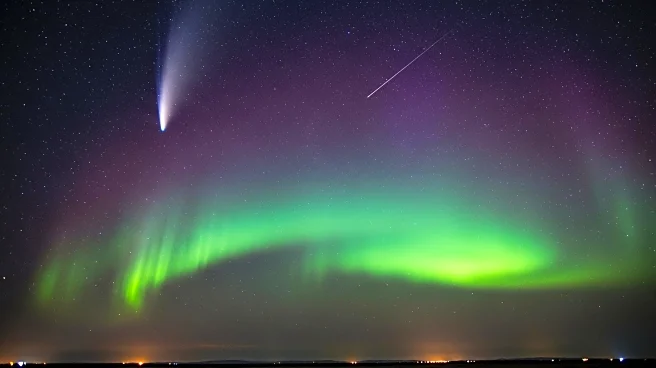What's Happening?
As the Sun enters the declining phase of its solar cycle, scientists predict an increase in geomagnetic storms, leading to more vibrant auroral displays. This phase, occurring after the solar maximum, is characterized by the presence of long-lived coronal holes on the Sun's surface, which release high-speed solar wind. These winds can spark geomagnetic storms, resulting in stunning auroras visible even in regions further south than usual. The phenomenon, often referred to as the Sun's 'last gasp,' is expected to occur within the next two to three years before the solar minimum. This period is marked by complex sunspot groups that can produce powerful bursts of solar activity, potentially leading to massive geomagnetic storms.
Why It's Important?
The increase in geomagnetic activity during the Sun's declining phase has significant implications for both aurora enthusiasts and technological systems. While the heightened auroral activity offers a unique opportunity for observers to witness spectacular displays, it also poses challenges for technology. Prolonged radiation and geomagnetic storms can interfere with communication systems, navigation tools, and spacecraft operations. These disturbances can lead to disruptions in satellite operations, GPS signals, and radio communications, posing risks to astronauts and space-based technology. The dual nature of this solar activity highlights the need for preparedness in managing potential technological impacts while enjoying the natural spectacle.
What's Next?
In the coming years, as the Sun approaches its solar minimum, scientists and space weather experts will closely monitor solar activity to predict and manage the impacts of geomagnetic storms. Stakeholders in the technology and aerospace industries may need to implement measures to protect sensitive equipment and systems from potential disruptions. Additionally, aurora chasers and the general public can anticipate more frequent and widespread auroral displays, offering opportunities for observation and study. The balance between enjoying the natural beauty of auroras and mitigating technological risks will be a key focus for researchers and industry leaders.
Beyond the Headlines
The increased geomagnetic activity during the Sun's declining phase also raises questions about the long-term impacts on Earth's climate and atmospheric conditions. While the immediate effects are primarily technological, the broader implications of solar activity on Earth's environment and climate systems warrant further investigation. Understanding these connections could provide insights into the complex interactions between solar cycles and Earth's natural systems, contributing to more comprehensive climate models and predictions.


